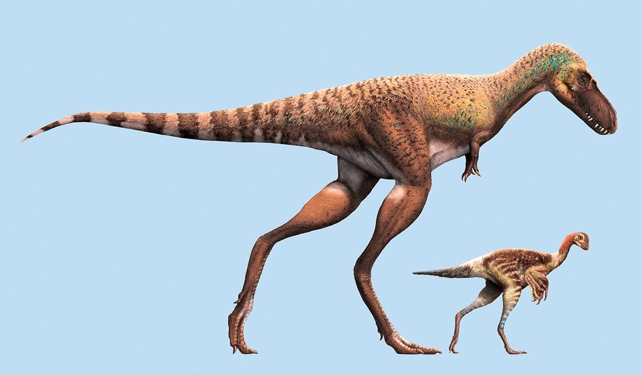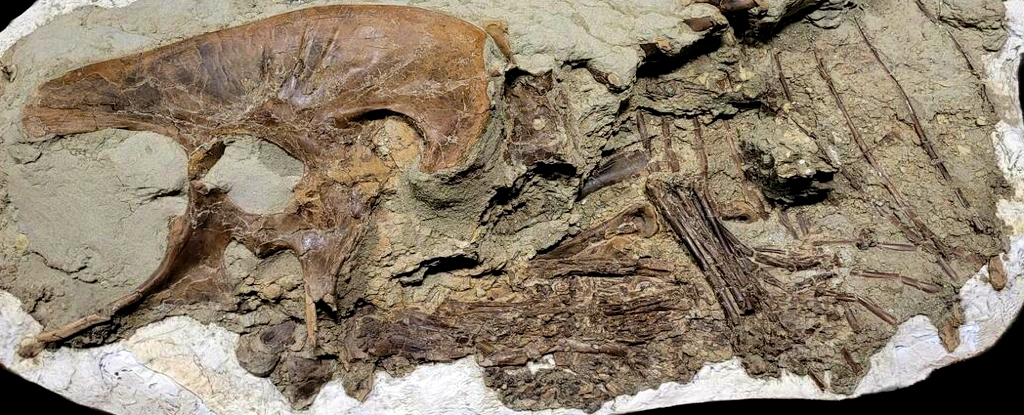A fossilized dinosaur from about 75 million years ago had its final meal well-preserved in its stomach, revealing surprising details about its diet.
The young Gorgosaurus libratus, a type of tyrannosaur, was found with the hind legs of small bird-like dinosaurs in its stomach, according to researchers at the University of Calgary.
Tyrannosaurs, which include Gorgosaurus and the more famous Tyrannosaurus, were some of the most formidable predators of their time. Evidence suggests that older tyrannosaurs typically ate large herbivores, researchers said.
However, the latest discovery suggests that the species’ diets changed as they grew, per research published in the journal Science Advances.
“This is the first time that such well-preserved stomach contents have been found inside the skeleton of a large species of tyrannosaur,” Darla Zelenitsky, the co-author of the study, said.
The creature weighed over 700 pounds — only around 10% of the mass of an adult— and was believed to have died young, between the ages of five and seven. The fossil was first found in 2009 in Dinosaur Provincial Park, Canada.
Museum staff first spotted toe bones in the stomach area of the dinosaur.
Researchers determined that these were the remains of Citipes, small turkey-sized dinosaurs.

“The rock within the ribcage was removed to expose what was hidden inside. Lo and behold, the complete hind legs of two baby dinosaurs, both under a year old, were present in its stomach,” according to study coauthor François Therrien.
It appeared that there were two different sets of legs eaten at different times, which was determined by the different levels of digestion.
The hind legs were possibly chosen to eat specifically by the dinosaur because they would have been the meatiest part of the body, researchers said.
“It’s well-known that tyrannosaurs changed a lot during growth, from slender forms to these robust, bone-crushing dinosaurs, and we know that this change was related to feeding behavior,” Zelenitsky said.
“They appear to have gone from hunting prey like Citipes — a small fraction of their size — as teenagers to hunting megaherbivore dinosaurs — as large, or larger, than their size — as adults,” she said.
The discovery shows that juvenile tyrannosaurs, who had narrow skulls and blade-like teeth, were better suited to eat small prey, while adult tyrannosaurs’ large skulls and strong teeth meant they could eat much larger prey.
This article was originally published by Business Insider.
More from Business Insider:





